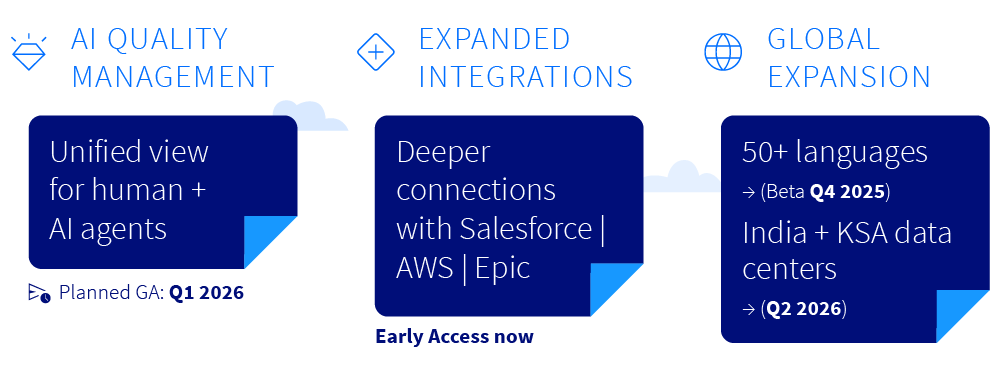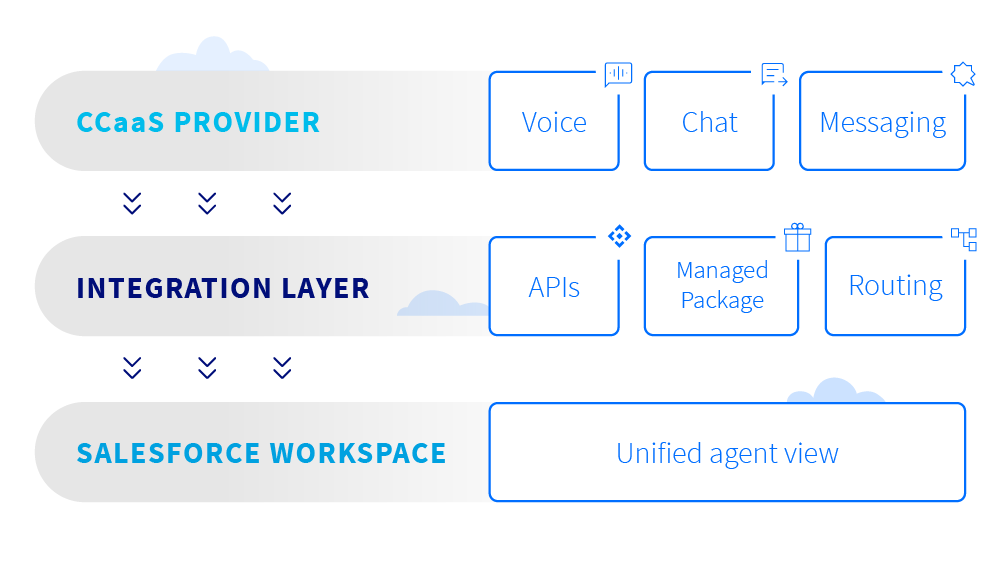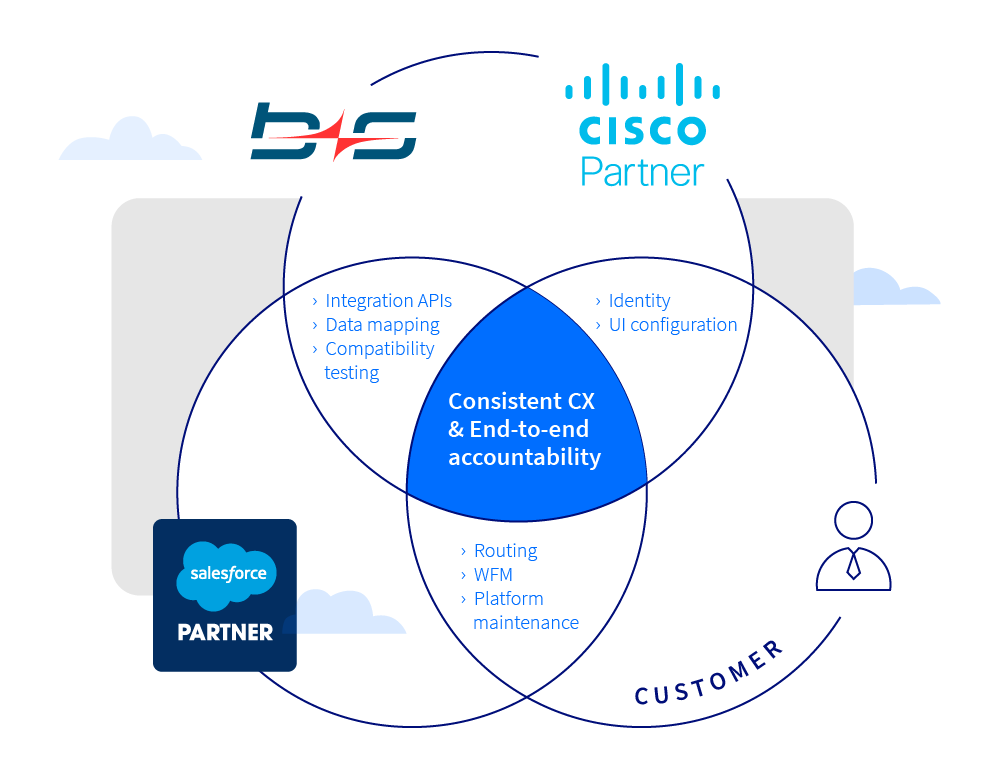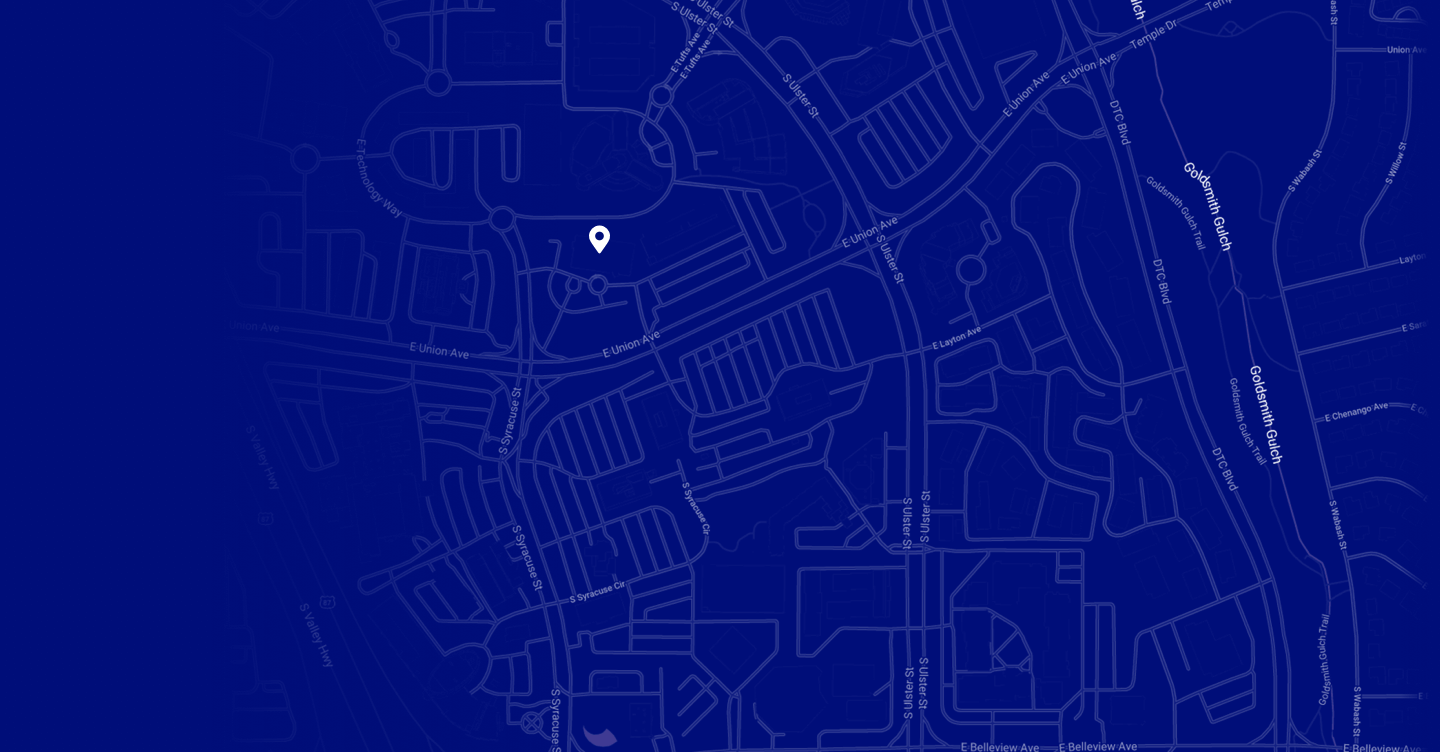Something big happened at WebexOne. Salesforce executives took the stage at Cisco’s flagship event to make a join announcement: Webex Contact Center is coming to Salesforce via Bring Your Own Contact Center as a Service (BYOCCaaS).
Read the BYOCCaaS announcement here
The announcement of Webex Contact Center for Salesforce, currently in early access with general availability planned for Q1 2026, represents more than a technical integration. It’s acknowledgment that contact center functionality belongs inside the CRM.

The BYOCCaaS Framework
The technical foundation behind this integration is Salesforce’s BYOCCaaS framework. This is a standardized approach that allows contact center vendors to embed their capabilities directly into Salesforce.
That means you can embed voice and digital channels from Webex Contact Center into Salesforce Agentforce Service (formerly Service Cloud), with critical conversational data consolidated in Agentforce Service and filtering into Data 360.
At its core, the framework provides three critical components:
- Unified routing and capacity management across voice and digital channels
- Native integration with Salesforce’s omnichannel supervisor tools
- Shared data models that eliminate duplicate customer records
This is the real-time synchronization between contact center events and CRM workflows that so many in the industry have been waiting for. It ensures that case creation, contact updates, and interaction logging happen automatically (without manual intervention).

Bigger Picture: Achieving Symbiotic Contact Center Architecture
This announcement comes at a time when the contact center-CRM integration imperative has never been stronger. Organizations that continue operating with fragmented systems face increasing disadvantages:
- AI limitations: AI requires unified data to deliver meaningful insights and automation
- Agent retention: Top talent gravitates toward organizations with streamlined, efficient workflows
- Customer satisfaction: Seamless experiences have competitive differentiators
- Operational efficiency: Hidden costs in training, management, and lost productivity
With BYOCCaaS, every interaction can be managed directly inside Salesforce, through Salesforce Voice (formerly Service Cloud Voice) and Bring Your Own Channel, powered by Webex AI and Agentforce.
What the Cisco-Salesforce Partnership Really Signals
As Vinod Muthukrishnan, VP & COO for Webex Customer Experience, explains:
“The two worlds have come together. Agents, on average, are looking at a dozen systems just to do their job, and we need to get out of their way and allow them to do what humans do best: lean in, pay attention, and give fabulous service.”
When market leaders acknowledge that unified agent experiences aren’t just nice-to-have features but fundamental requirements, it signals a permanent change in customer expectations.
Benefits of Contact Center-CRM Integration |
|
|
For Agents: |
For Organizations: |
|
|
|
For Customers: |
|
|
|
More Than an API Connection
Vendors often present integrations as straightforward API connections, but the reality involves significant architectural complexity. The challenge lies in harmonizing two fundamentally different system designs: contact centers built for real-time interaction management and CRMs designed for relationship tracking and business process automation.
Consider capacity management, for example.
Traditional contact center systems monitor agent availability based on concurrent interactions and skill-based routing. Salesforce’s omnichannel platform manages agent capacity through work item assignments and case priorities.
The BYOCCaaS framework translates between these models in real-time, so that an agent handling a Webex voice call appears correctly unavailable for Salesforce chat assignments.
Data synchronization presents another layer of complexity.
Contact center platforms generate interaction records, call dispositions, and performance metrics using vendor-specific schemas. These must be mapped to Salesforce objects while maintaining referential integrity and supporting both real-time updates and historical reporting.
When integration points fail—and they often will—organizations need sophisticated error handling that doesn’t corrupt customer records or leave interactions orphaned between systems.
Then there’s authentication and security.
Users must maintain seamless single sign-on across platforms while preserving role-based access controls that may differ between systems. Session management becomes particularly challenging when agents move between contact center functions and standard CRM workflows throughout their workday.
Reality Behind the Roadmap
The Q1 2026 timeline for Cisco’s Webex Contact Center for Salesforce integration may seem distant, but the underlying technology foundation has been proven in production environments for over two years.
Organizations looking at this announcement should understand that the core capabilities—seamless telephony integration, unified agent experiences, and comprehensive CRM-contact center convergence—aren’t experimental concepts waiting to be developed.
The technical capabilities and business value
What makes this foundation significant is how it addresses the core challenges driving industry convergence. The solution centralizes communication by integrating telephony directly with Salesforce Voice. This allows for integrated calling that enables:
- In-console telephony for direct access and management within Salesforce
- Real-time data utilization for live call transcripts and AI-driven insights
- Omnichannel customer support that aligns voice, chat, and digital channels
The foundational technology is already here
The sophisticated integration capabilities that Cisco and Salesforce are promising align closely with what’s already available through b+s Connects for Salesforce Voice.
The technology enables agents to manage calls, access customer information, and leverage AI-driven insights all within Salesforce, streamlining operations and enabling personalized, efficient customer interactions from the start.
It’s not theoretical and it’s already in production for some of our clients, including enterprise-plus-sized deployments.
This immediate availability becomes particularly relevant for organizations facing current operational challenges. The productivity gains, customer experience improvements, and operational efficiencies that drive vendor roadmaps can be realized now rather than postponed until major vendor partnerships mature.
BYOCCaaS and the Service Provider Ecosystem
Salesforce provides the integration framework, user interface components, and core CRM functionality. Contact center vendors like Cisco (or their partners, like Bucher + Suter) develop the connectors, maintain the interaction routing engines, and ensure their platforms can communicate with Salesforce’s APIs effectively.
The integration points create shared responsibility zones that may complicate accountability, including:
- User authentication might involve Salesforce identity management, Cisco’s platform services, and the customer’s own directory systems.
- Data mapping and transformation logic typically falls to the contact center vendor, but the resulting records must conform to Salesforce’s data model and the customer’s specific configuration.
- Workforce management systems, quality monitoring platforms, and analytics tools must integrate with both the contact center platform and Salesforce. These relationships often involve separate contracts and support arrangements.

In addition, maintaining consistent user experience across integrated platforms requires coordination mechanisms that don’t exist in traditional vendor relationships. The same goes for testing integration, version compatibility, and performance monitoring.
STAY UP TO DATE

b+s Elevate
Organizations facing immediate customer service challenges can’t afford to wait months for vendor roadmaps to align.
b+s Elevate is our all-in-one solution that makes a unified contact center-CRM experience possible, without having to wait until next year. By deploying as a unified Salesforce package available from the AppExchange, b+s Elevate gives agents comprehensive contact center functionality through the same interface they’re using every day.
With over 100,000 active CTI agents, Bucher + Suter are Cisco and Salesforce-certified integration experts who have built the world’s most intelligent and comprehensive Webex to Salesforce Voice integration. This includes:
- Predictive analytics
- Intelligent call routing
- Collaboration tools
- Cisco’s industry-leading security protocols
Perhaps most importantly, b+s Elevate establishes the architectural foundation that aligns with where the industry is heading. Bucher + Suter’s renowned customer service team handles any issues with the complete solution including Cisco Webex, Salesforce Voice, and their connector, with dedicated technical experts ensuring organizations receive assistance when they need it.
Contact center-CRM convergence may have hit the main stage, but it underscores a longstanding philosophy embodied by solutions like Elevate. If your contact center is ready to integrate these two core technologies, let’s start the conversation.





